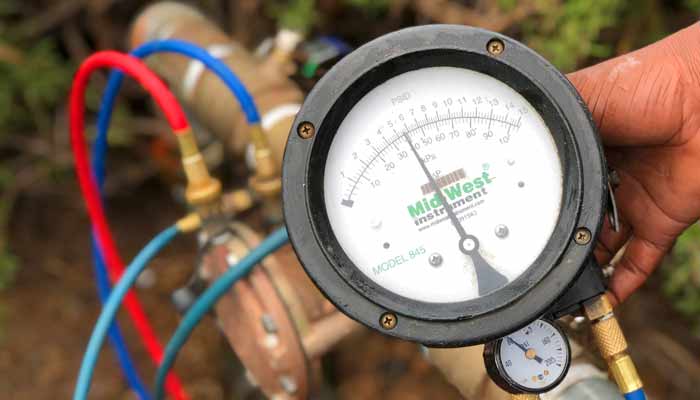Just how do you actually feel on the subject of Backflow Prevention?

Yes, you need to backflow examination your home's water to make sure that the water is free of contaminants and also unsafe levels of chemicals. You need to not try to carry out heartburn testing on your very own since of the equipment required as well as room for error. We suggest that you call an expert plumber every number of years to test your water.
Heartburn Can Effect Both You and Your City
Numerous cities develop backflow standards due to the fact that dangerous backflow can affect the general public water system in addition to a solitary structure. Modern cities have backflow gadgets in area that protect the water supply that comes from a lot of residences and also commercial properties. The actual threat comes from watering systems, which can hurt the supply of water with hazardous fertilizers, manure, and also other chemicals.
What Creates Heartburn?
A typical reason of heartburn is a loss of water stress that triggers the water to siphon back into the water supply. After some time, there is a loss in water pressure and the tube starts to draw the water back right into the water supply. As you can think of, there are now chemicals from the paint that are getting in the water supply, possibly presenting a danger.
Backflow Testing is Called For by Legislation in Certain Cities
Depending upon where you live, you might in fact be required by legislation to backflow test your legislation. For example, Iowa City keeps a document of all homes offered by the city's supply of water. The city requires that certain "high-hazard" facilities undertake heartburn testing. In some cases, houses such as residences and apartment buildings are influenced.
You Can Avoid Heartburn
The major objective of a heartburn tool is to avoid water from streaming backward right into your water supply. Plumbers install the device on the pipelines in your residence to make certain that the water just streams in the right instructions.
What is Backflow?
Basically, heartburn is when water moves upwards-- the opposite direction in the plumbing system. This is likewise known as "backpressure." When the water moves in this direction, it can combine with harmful contaminants and also position a risk.
Call a Plumber to Examine for Heartburn Prior To It is Too Late
While it could seem grim, infected water can result in horrible bacterial as well as viral infections that are hard to treat. If there are any hazardous chemical degrees, a plumbing business can swiftly check your house's water to establish. The tiny investment is if you can prevent the suffering that originates from consuming infected water. And if you do discover that your water has high levels of toxic substances, a plumber can quickly mount a heartburn avoidance tool.
Yes, you require to backflow examination your home's water supply to ensure that the water is cost-free of toxic substances and also unsafe degrees of chemicals. Many cities establish backflow guidelines because unsafe backflow can affect the public water supply in enhancement to a solitary building. A normal reason of backflow is a loss of water pressure that triggers the water to siphon back right into the water supply. After some time, there is a loss in water stress and the hose starts to draw the water back right into the water supply. The main purpose of a backflow tool is to prevent water from flowing backward right into your water supply.
WHY DOES BACKFLOW TESTING NEED TO BE DONE EVERY YEAR
What Is Backflow?
Toxic gas backing up into a building is one example of potential backflow issues, but backflow can occur in many other ways.
Backflow is generally referred to as the reversal of a liquid or gas in a plumbing system.
Most issues for the public occur with backflow resulting in contaminated drinking water. If you look up backflow issues online you’ll probably find references to “potable” water. That means drinking water.
There have been backflow issues in the past with drinking water. Chemicals, sewage and other contaminants have found their way into drinking water causing health issues for those that count on the fresh water.
What Causes Backflow?
In a residence or commercial building water generally flows one way. This normal flow is usually driven by consistent pressure in the water and waste system.
Anything that changes the normal pressure in the system can lead to backflow.
Fire hydrant use or malfunction can reverse the normal pressure in the system on a city line, but backflow can occur in a number of different ways.
Sometimes backpressure might be caused by someone using a garden hose and submerging the end of the hose in a pool of liquid. If pressure is lost the flow could reverse and contaminants could be released into the drinking water.
Anytime there is a connection between contaminants and the drinking water there is potential for a backflow issue. Sometimes these connections are not immediately obvious like the garden hose connecting to a building’s drinking water supply.
Backflow Regulations
The Environmental Protection Agency (EPA) provides guidelines and regulations for state and local governments regarding backflow. State and local governments also have their own guidelines and regulations for backflow prevention.
Arizona has its own backflow regulations.
Due to issues with backflow in the past, regulations require backflow preventer devices to be used in nearly all residential and commercial buildings.
A backflow preventer is a device that prevents backflow as cross-connection points where potential backflow issues may occur.
While backflow is not a common occurrence, preventers are in place to make sure there is no contamination should something malfunction or go wrong with a building’s water supply.

We were made aware of that editorial on Backflow Prevention through someone on our other web blog. If you please take a moment to share this article if you liked it. Thank-you for taking the time to read it.
Leaks? Contact us!